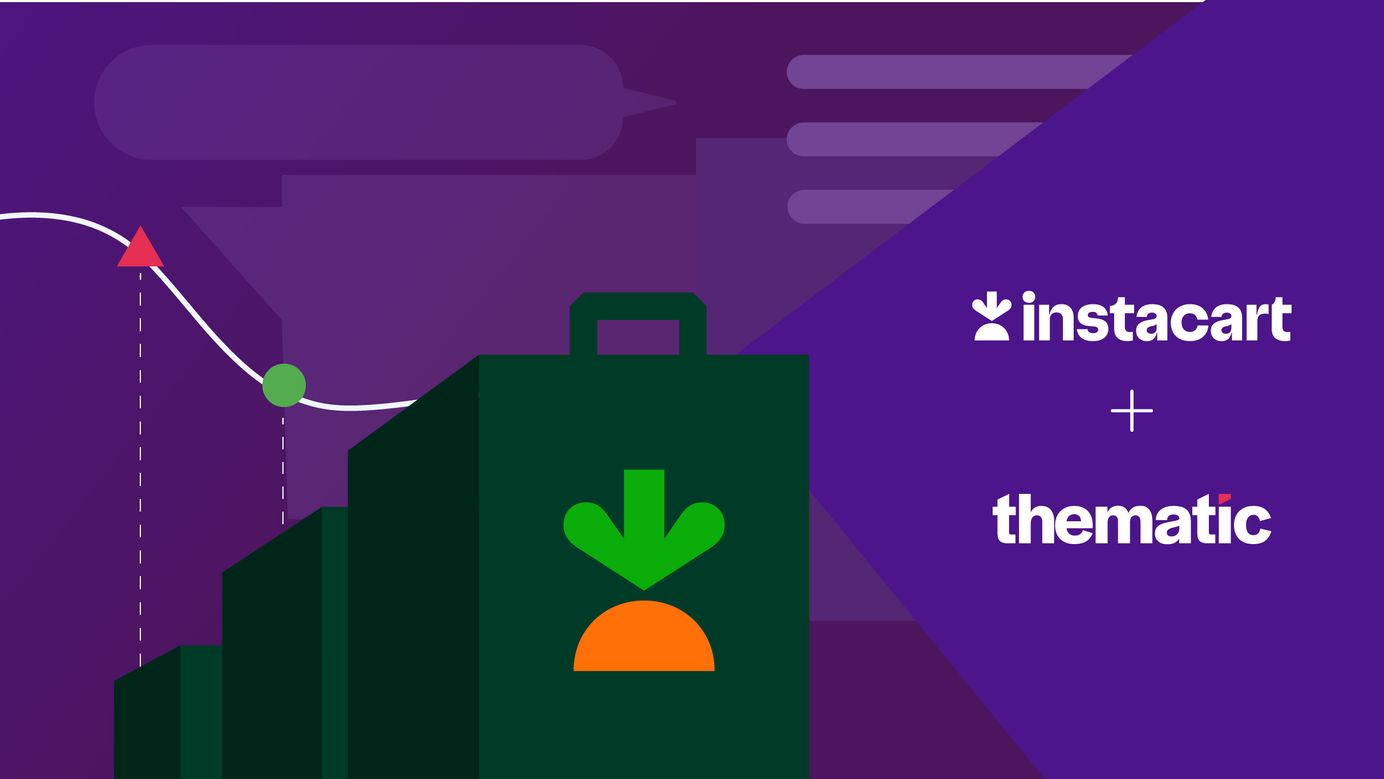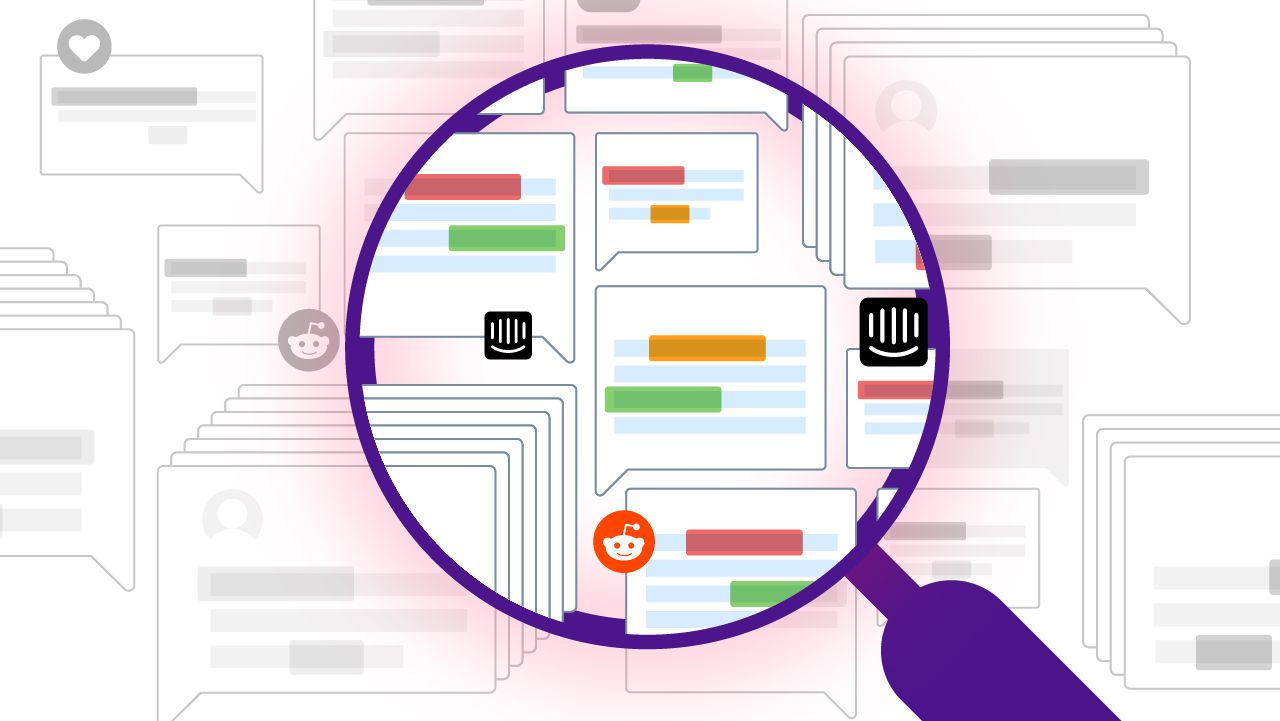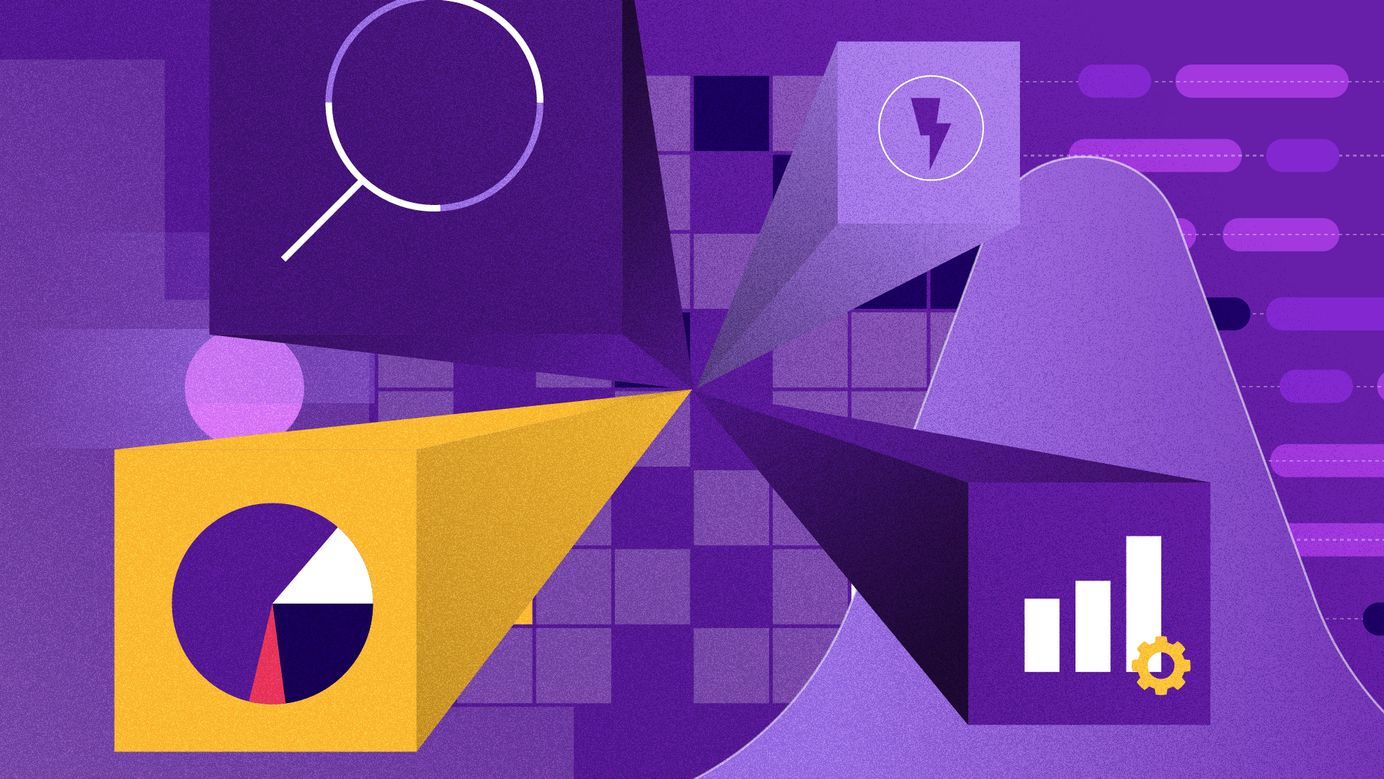
Solving for the whole customer experience: Ant Marty from Instacart
Instacart has four distinct types of customers: their end consumers, personal shoppers, retailers, and the companies advertising on their platform. Hear from Ant Marty about how she uses Thematic to solve for Instacart's whole customer experience.
A fascination with human behaviour has served Instacart’s Ant Marty well, though not in the ways she initially expected. Ant presumed she would become a college professor after completing her psychology degree at William & Mary University in New York.
Instead, the product operations team manager has immersed herself in practical rather than theoretical problem-solving. “Academia was not for me,” the San Francisco resident says. “I wanted to apply a lot of the research I’d learned.” These days, the eternally-curious social psychologist harnesses her skills inside the world’s largest online grocery service.
Instacart has four distinct types of customers; about 10 million end consumers, about 500,000 personal shoppers, more than 40,000 retailers from local grocers to chain stores) and all the companies that advertise on Instacart’s various platforms.

Instacart is best-known for its online grocery app, which links a consumer with a personal shopper who will buy and deliver an order in any one of 5,500-plus cities across the United States and Canada. However, Ant points out the company actually has four distinct types of customers; about 10 million end consumers, about 500,000 personal shoppers, more than 40,000 retailers from local grocers to chain stores) and all the companies that advertise on Instacart’s various platforms.
“We describe ourselves as a four-sided marketplace. For us to really succeed as a business, we need all sides of the marketplace to work. The product operations team I’m on supports all four.” Luckily, Ant is a systems thinker. That is, she thrives on examining every part of a system and understanding how all the parts work together. She gets a kick out of looking at an issue from multiple angles.
As we evolve as a company, as the customer base grows, as we innovate, the customer service teams need to be prepared to support the impact that all our activities are having on all customers.
“One of the biggest problems we’re trying to solve is the whole customer experience, what happens when they contact customer support. What do they need to be prepared to answer? As we evolve as a company, as the customer base grows, as we innovate, the customer service teams need to be prepared to support the impact that all our activities are having on all customers.
“That means understanding who the customers are. It could be the end consumer; are they getting their groceries on time, are we fulfilling their needs for their shop for the week? It’s also deeply understanding who the retail customers are. It could be a mom and pop store or a warehouse store or direct-to-consumer alcohol.”

If a personal shopper is accustomed to buying supermarket groceries and then delivering them to a customer's house, they may strike issues when asked to purchase office products from a chain store and deliver them to a convention centre. The shopper might need to find a nominated desk within a store to collect printed brochures. Or, if they have big and bulky items, know whether these will fit into the shopper’s vehicle.
“So the customer support teams need to know if it’s the personal shopper that is having issues. Or are they talking to a retailer? Or if it’s a consumer contacting them about an order, understanding what product we’ve launched differently that’s causing some kind of confusion. Or advertisers needing troubleshooting help? They need to understand what type of customer they are solving a problem for.”
Specialised customer care teams may focus on a particular area of interest, honing in on logistics or a specific retailer or type of shopper. Or perhaps a geographical boundary. Ant says Thematic insights provide her product operations team with an overview of all these areas.
“Thematic gives that 360 degree view, being able to speak easily to how a problem has an impact across all our customers. And where the problem lies. My team fills in the gaps that help contextualise what’s happening across the whole ecosystem, to be able to solve a problem. We get tons of data every day, on all sides of our business, from all these different places. And we get multiple types of data.”
Thematic is currently focused on two major app review data sources: the Instacart app used by consumers making a purchase, and the apps that Instacart builds for its retail partners.
She says Thematic is currently focused on two major app review data sources: the Instacart app used by consumers making a purchase and the apps that Instacart is building for its retail partners. Thematic pulls and analyzes public reviews from the likes of Apple Store and Google Play. The comments are analyzed along with the star rating. In addition, the insights are linked to feedback from surveys sent by the company’s own research team, or third party data shared by retail parties.
“I’d love, one day, for all the data to come through one source. A lot of our data is experiential, showing a sentiment, a scoring system or a rating. As a product ops team, tying that in to business product analytics data is really important to us. And it’s not easy.”
She has no doubt Thematic is helping though. “When I think about the insights we’re getting now, we had been looking at it in silos.”
Whereas previously her team might have examined issues thrown up by either Instacart app consumers or by retail partners, they could now see how an out-of-stock product might affect the consumer and personal shopper as well as the retailer and advertiser. Sometimes, suggestions from a customer will be taken on board to alleviate pain points. She says Thematic is good at providing ‘color’, using customer comments to illustrate where a problem lies and where best to begin to solve it.
Thematic is good at providing ‘color’, using customer comments to illustrate where a problem lies and where best to begin to solve it.
Likewise, her team can leverage insights from the platform to gauge the effectiveness of a product launch, to see how well the product is resonating with customers. “Thematic helps to quickly identify themes, to understand both the size and the impact on any identified issue. So we know where to attack the problem first, to make sure we’re going to the root causes.
“How did we do? What areas can we improve? If we launch something new, is a different problem going to emerge? It’s creating a feedback loop into product teams, so we can solve that problem quickly rather than let it sit there and accumulate over time.”
Ant recalls a particular instance where the personal shoppers’ app was continually crashing. While shoppers were clearly frustrated, Instacart needed data on the specifics. Was the problem occurring at a key time in the delivery chain – while hunting for the customer’s address, perhaps – or not? What were the sub-themes relating to these crashes and how important were they?
Then, once the bug was found, Thematic insights were able to demonstrate whether the problem had truly been solved. “So we think we fixed the issue. Then, we can see from the feedback analysis, almost in real time, if it really worked. We could be fixing a thing, experimenting, seeing the result of that through the data. The data can really validate if we are building the right things or fixing issues in the right place.”
The data can really validate if we are building the right things or fixing issues in the right place.
Ultimately, with Thematic’s help, Ant would like her team to be able to tie all its operational, experiential data to the company’s objectives and goals. “We’re still in the early stages, the team is still growing but that’s my vision. That's where we want to be.”
Stay up to date with the latest
Join the newsletter to receive the latest updates in your inbox.




